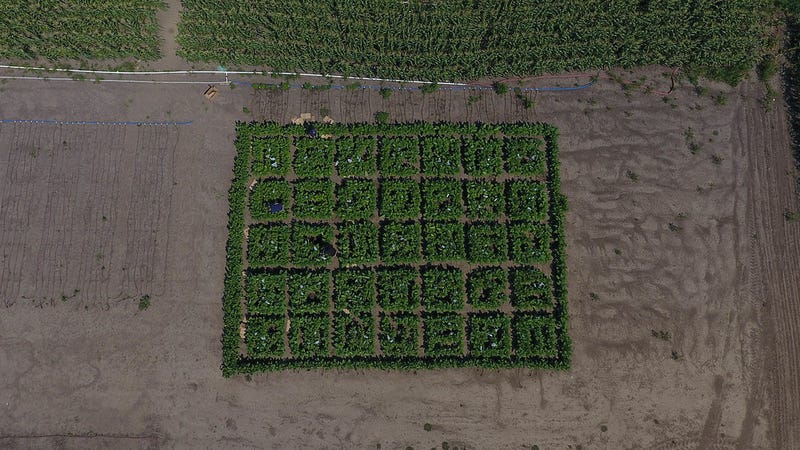Genetic modification turbocharges photosynthesis and drastically improves crop growth

Scientists genetically modified plants in order to give a huge boost to photosynthesis, hoping to one day improve the yield of food crops like rice and wheat, according to a new paper.
A swelling population means that demand for plant-based products continues to increase in kind. This challenge has resulted in the development of things like pesticides, advances in irrigation, and increased mechanization of the farming process. Researchers now hope that through genetic modification they can optimize the process by which plants use sunlight and carbon dioxide to produce fuel for themselves, called photosynthesis.
“That’s our goal, to make a crop that has a solution to all photosynthetic problems,” study author Amanda Cavanagh, postdoctoral researcher at the University of Illinois, told Gizmodo.
Photosynthesis is an incredible chemical reaction, but it’s not perfect. In the presence of oxygen, a process called photorespiration is required to remove a byproduct called glycolate, which is toxic to the plant. This can cost the photosynthesis process 20 to 50 percent efficiency, especially in hot and arid climates, according to the paper published in Science. The scientists wondered if there was a more efficient way to remove the toxic byproducts.
The researchers used computer simulations to design three new processes to deal with the glycolate. Then they spliced new DNA into tobacco plants’ chloroplasts, the site where photosynthesis occurs. They also prevented glycolate from leaving the chloroplasts to ensure they carried out the alternative processes, rather allowing photorespiration to take over. They saw over 40 percent increases in the amount of biomass the plants produced.
The research was funded by a grant from the Bill and Melinda Gates Foundation, the UK Department for International Development (DFID) and the Foundation for Food and Agriculture (FFAR)
The paper impressed at least one outside researcher we spoke to, Maureen Hanson, a professor in the Molecular Biology and Genetics Department at Cornell University. She noted not only the improvement in growth, but also the fact that the researchers performed their tests in a field, rather than in a greenhouse.
There’s plenty more work to do, and it could be a decade or decades before you see this technique employed on farms. After all, the study was performed on tobacco because tobacco creates a canopy of leaves, so it’s obvious when the plants are doing better as a group. The scientists behind the work hope to instead use the methods on food crops like soybeans. And before hitting the market, it must overcome the necessary regulatory hurdles—scientists will need to demonstrate the alterations are safe and don’t result in unexpected side effects.
Turbocharging photosynthesis is an intriguing solution to reducing world hunger, and it’s a process that’s previously been left untouched by genetic modification and selective breeding. But this paper confirms what we’ve been saying for a while: The final frontier in industrial agriculture will be hacking the very process by which the plant feeds itself and survives.
By: Ryan F. Mandelbaum | Gizmodo
RELATED RIPE OBJECTIVES
Photorespiratory Bypass